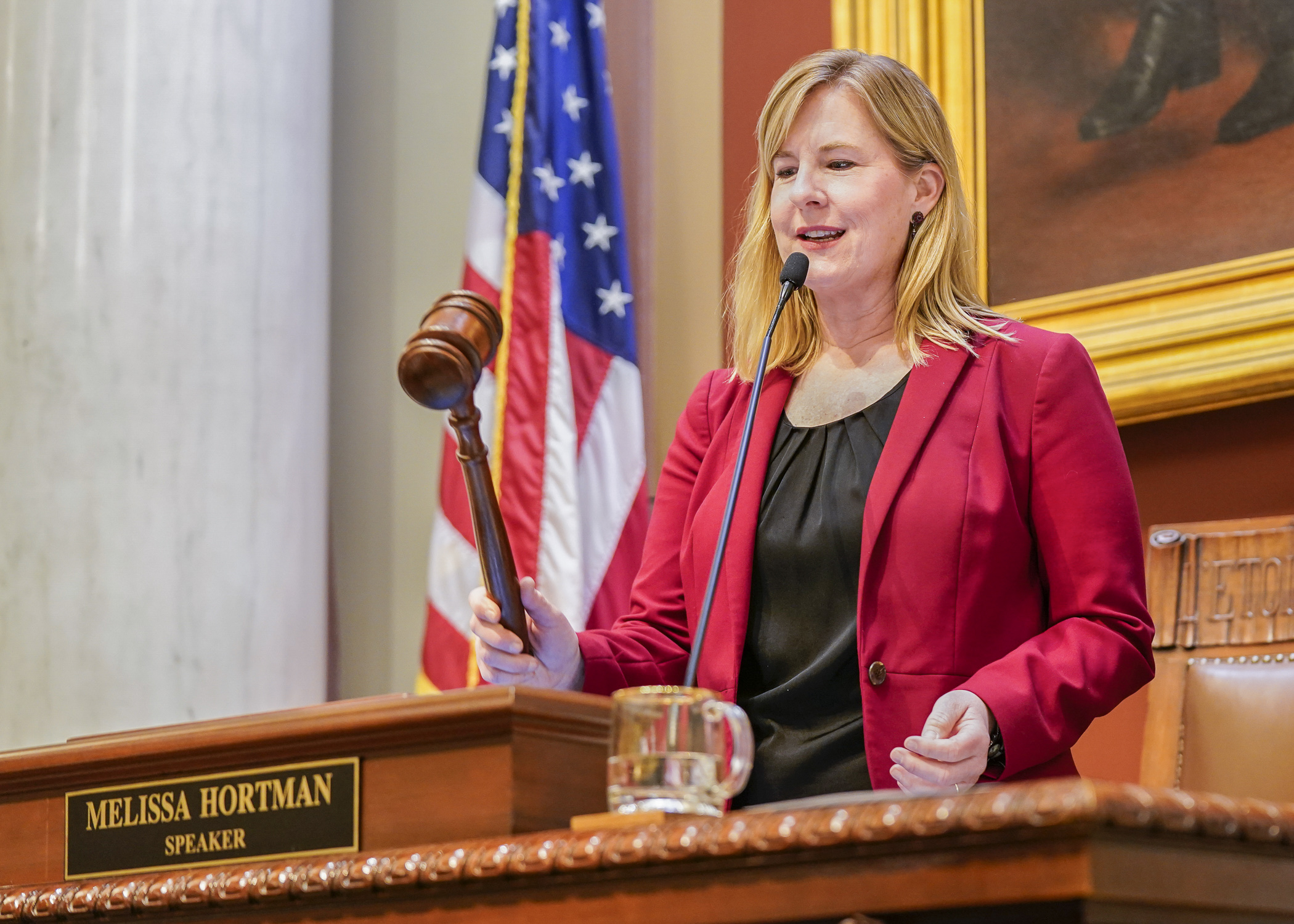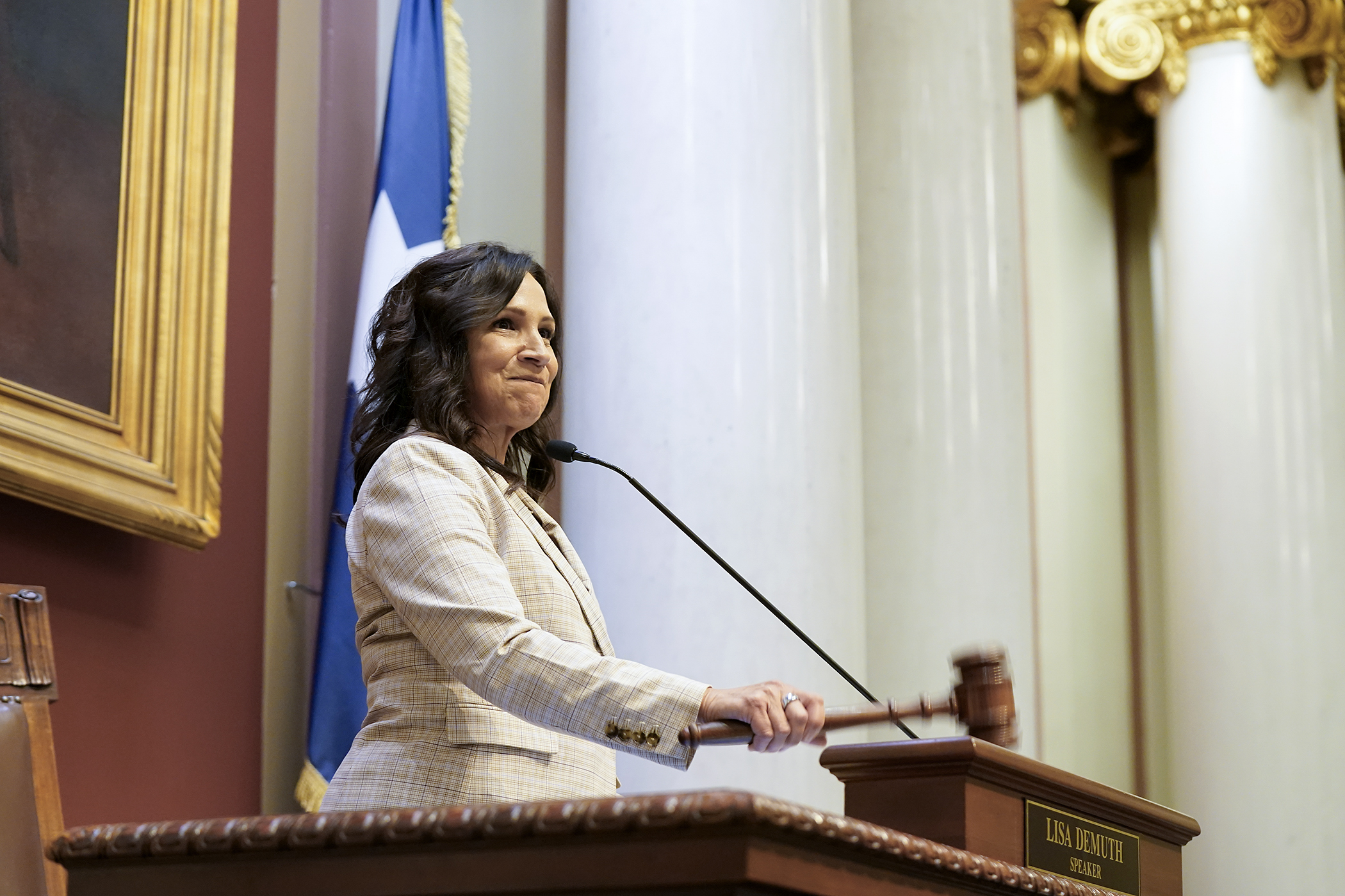Minnesota lawmakers send Walz bill to address higher ed deficit, boost state grant program
How do you fix a deficit in a program that helps Minnesota students go to college while also funding the rest of higher education in the state?
That question was answered Monday when the House passed SSHF6/SSSF1*, which would fill a $239 million hole to the State Grant Program.
The 95-36 vote came hours after Senate passage occurred 36-31. The bill awaits gubernatorial approval.
Sponsored by Rep. Dan Wolgamott (DFL-St. Cloud) and Sen. Omar Fateh (DFL-Mpls), the bill would also appropriate $4.01 billion to the four entities it funds: Office of Higher Education, Minnesota State, University of Minnesota and the Mayo Clinic.
[MORE: View the summary, spreadsheet]
“This is a $4 billion bill to take care of students so they can go to college, and we can have a great workforce. We achieved some amazing things,” said Rep. Marion Rarick (R-Maple Lake).
Lawmakers solved the State Grant Program deficit by allocating $44.47 million more to the Office of Higher Education, which is responsible for the state’s financial aid programs, and cutting unnecessary or inefficient spending.
In addition to the funding increase, the bill would use policy changes to attack the deficit including:
- lowering the maximum lifetime credit cap on state grant awards from 180 credits to 120 credits;
- imposing a tuition cap for four-year programs;
- reducing the allowance for living and miscellaneous expenses from 115% of federal poverty guidelines to 106% for the purpose of calculating cost of attendance; and
- changing the deadline for applications for state grant awards for an academic term from the end of the fiscal year following the term to 30 days after the start of that term.
“I'm proud that in working together through a combination of cuts and levers, we were able to backfill that State Grant Program which is going to do so much making sure that Minnesota students can attain the college of their dreams to get the degree to pursue their careers.” Wolgamott said.
[MORE: House OKs nearly $4 billion higher ed budget that would offset state grant program deficit]
As part of the $4 billion appropriation, Minnesota State would receive $1.76 billion, an additional $6.2 million above February base. The University of Minnesota would be appropriated $1.49 billion, the Office of Higher Education $760 million, and the Mayo Clinic zero for the 2026-27 biennium.
In a statement, Rarick noted Mayo’s gross revenue in 2024 was around $18.8 billion, making state funds unnecessary. The bill also cuts funding to Lutheran Social Services, which tax records indicate has 10 employees making more than the governor and a CEO making $420,000.
Besides increasing funding to the State Grant Program, the Office of Higher Education’s funding would include an additional $8.4 million for the Fostering Independence Higher Education grants, while the State Work Study Program’s funding would be cut by $5.5 million.
For Minnesota State, an additional $4.5 million would go to Emergency Assistance for Postsecondary Students, $1.2 million for Hunger Free Campus grants and $500,000 for Lake Superior College Emergency Response Training Center PFAS remediation.
For the University of Minnesota, $3 million is targeted at the U of M/CentraCare residency program, $1.56 million for EAPS grants, and $400,000 for Hunger Free Campus Grants.
A $15.26 million grant for ALS research would be directly funded to the university instead of through the Office of Higher Education.
Policies
The bill would also:
- establish a last-dollar, full tuition and fee grant program for Minnesota law enforcement officers and their dependents attending public colleges and universities in Minnesota;
- permit Minnesota State to offer applied doctoral degrees in cybersecurity;
- require Minnesota State and request the University of Minnesota to ensure resident rates are paid under the North Star Promise program;
- make ineligible for the North Star Promise scholarship a student who has completed the degree requirements for their first baccalaureate degree;
- specify that certificates, diplomas or degrees earned under the Dual Training Grant program must come from accredited postsecondary institutions;
- amend eligibility requirements for institutions to receive state student financial aid;
- expand the Tribal College Supplemental Assistance program to provide financial assistance to tribal colleges based on beneficiary students as well as nonbeneficiary student;
- remove a requirement that the Office of Higher Education determine whether institutions in another state maintain certain academic standards for SELF loans;
- remove the Office of Higher Education’s “number of late payments in the previous 12 months” from the list of data elements the office may disclose to a consumer credit reporting agency with borrower consent;
- require the Minnesota State system, and request the University of Minnesota, to maintain a supply of nasal opiate antagonist at each campus residential building; and
- expand the existing free unlimited access for disabled veterans to also include one guest of the veteran.
Related Articles
Search Session Daily
Advanced Search OptionsPriority Dailies
Speaker Emerita Melissa Hortman, husband killed in attack
By HPIS Staff House Speaker Emerita Melissa Hortman (DFL-Brooklyn Park) and her husband, Mark, were fatally shot in their home early Saturday morning.
Gov. Tim Walz announced the news dur...
House Speaker Emerita Melissa Hortman (DFL-Brooklyn Park) and her husband, Mark, were fatally shot in their home early Saturday morning.
Gov. Tim Walz announced the news dur...
Lawmakers deliver budget bills to governor's desk in one-day special session
By Mike Cook About that talk of needing all 21 hours left in a legislative day to complete a special session?
House members were more than up to the challenge Monday. Beginning at 10 a.m...
About that talk of needing all 21 hours left in a legislative day to complete a special session?
House members were more than up to the challenge Monday. Beginning at 10 a.m...